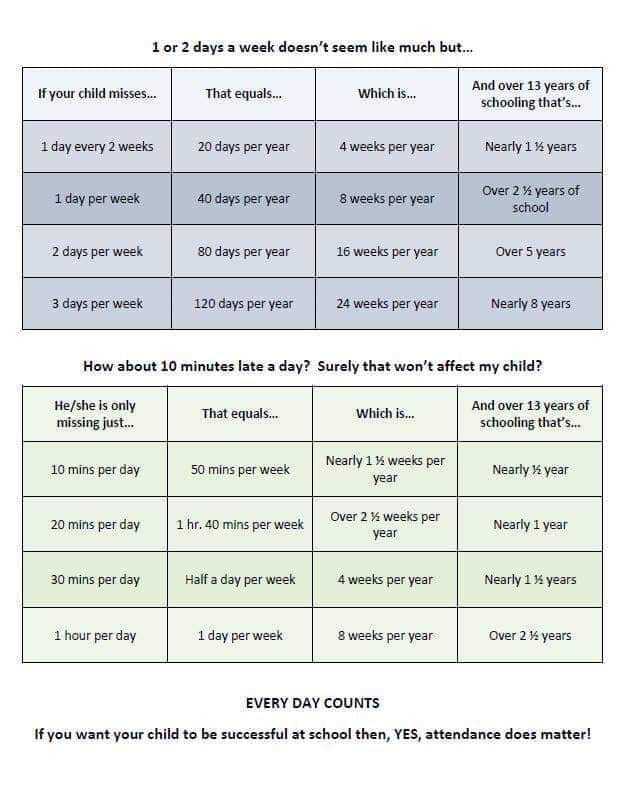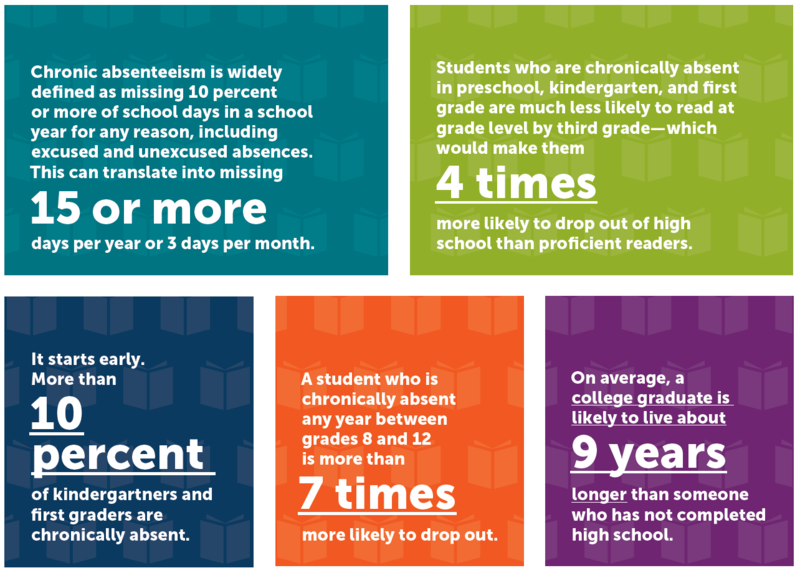Beth Rock’s Updates
Week 5 - Student Attendance and Achievement
Poor student attendance equates to many missed opportunities to learn and achieve in a school setting. Teacher effectiveness cannot be fully embraced unless students are participants in the classroom learning environment on a regular basis. Quantitative data has been very useful in demonstrating links to student performance as it relates to short and long-term outcomes.
The following table is a very helpful tool in demonstrating how missing days or even minutes of school can add up to create significant gaps in student exposure to the opportunities for learning that school has to offer.
Consider the following research that relates student attendance to student achievement:
- One in ten kindergarten and first grade students (nationally) are chronically absent, missing nearly a month of school. These early absences correlate with reading difficulties and poor attendance patterns in later years.
- A California study found that only 17 percent of students who were chronically absent in both kindergarten and first grade were reading proficiently in third grade, compared to 64 percent of those with good attendance.
- Students can reverse their academic difficulties if they improve their attendance.
- Parents are often unaware of the negative effects of absenteeism.
- Attendance rates are better in schools where parents feel welcomed and engaged and where a level of trust and safety has been established.
Quantitative data can provide insight into achievement predictors at all age levels.
How To Encourage Good Attendance
There is plenty of research indicating that attendance is key to success both in and out of the classroom. How do we take this data and translate it into action?
- Create a method for data collection within your school that accurately tracks and analyzes trends in student attendance
- Analyze attendance patterns for students as well as classrooms
- Utilize professional development opportunities to help teachers and administrators understand chronic absenteeism and its effect on achievement
- Seek out a way to support students who are frequently absent
Quantitative Data is defined as data that can be reduced to a set of numbers. While studying trends, assessments and outcomes from an analytical perspective can be useful and informative, we should never dismiss the importance of teacher intuition and extenuating circumstances. Adding the human element to understanding individual student needs and challenges should always be factored into a well-rounded assessment.
References
Early Reading Proficiency in the United States, KIDS COUNT, Annie E. Casey Foundation, January 2014
Attendance in Early Elementary Grades: Association with Student Characteristics, School Readiness and Third Grade Outcomes, Applied Survey Research, May 2011.
Ehrlich, Stacy B. et al. Preschool Attendance in Chicago Public Schools: Relationships with Learning Outcomes and Reasons for Absences: Research Summary. September 2013.
Connolly, Faith and Olson, Linda S. Early Elementary Performance and Attendance in Baltimore City Schools’ Pre-Kindergarten and Kindergarten, Baltimore Education Research Consortium, Baltimore, Md., March 2012.




